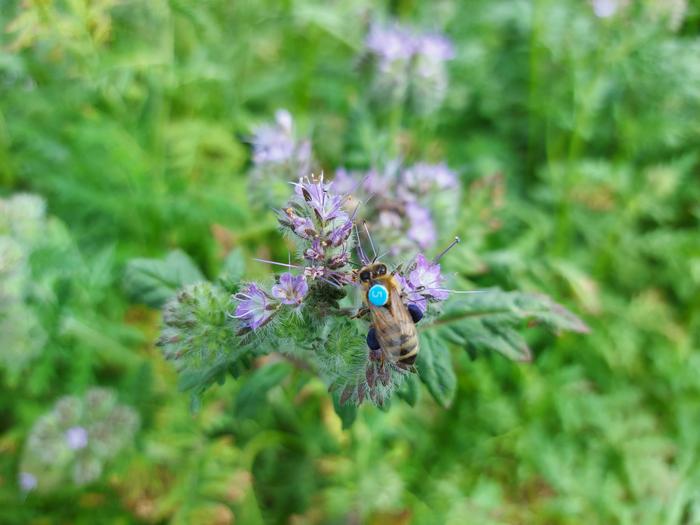AI Simulation Says Neonics May Make Bees Stressed Out
Honeybees are important pollinators for agriculture like the sweetener and almond industries but are also invoked by environmentalists targeting pesticides.
It's hard to separate marketing hype from reality but scholars believe simulations and a monitoring system could see if activists who target seed treatments like neonicotinoid pesticides have science or just-so stories.
Neonicotinoid pesticides are widely used in agriculture because they are primarily seed treatments. Plants absorb and distribute neonicotinoids throughout their tissues, they are rarely used as foliar spray, and some have wondered if trace exposure could be harmful to honeybees. There are a few claims it has an impact, that neonicotinoid-exposed bees make fewer trips to collect pollen throughout the day, but those were not set up using real-world behavior.

Does tagging bees affect their behavior? Photo: Credit: Katharina Schmidt of apic.ai GmbH
So the team behind the 2019 claim repeated it, again exposing bees to high doses of neonicotinoids rather than the homeopathic levels they get in actual crops, but creating an AI-type model to see if it affected the colony. The believability of a human creating a program that knows stress level in bees and what impacts that has on colony dynamics is subjective, making this only EXPLORATORY.
The ecologists and environmental toxicology employees unsurprisingly declared that, indeed, neonics they have opposed for 25 years are making bees be less efficient.
"We were surprised that we could replicate the findings of our first field experiment in 2019,” says Silvio Knaebe of Ecotox GmbH, a company in business to create tests showing harm from science.
댓글
댓글 쓰기